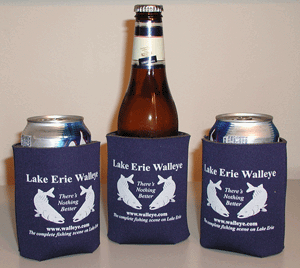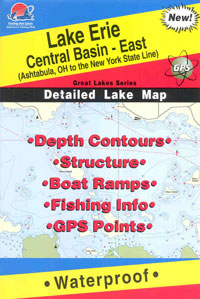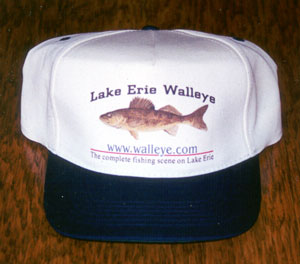Chasing Down June Walleyes
by Mark Leadens
June is prime time for chasing down hungry walleyes and is when some
 of
the hottest action of the entire season takes place. Itís a time of the
year that you really donít want to miss because there are just too many
good things going on. For one, the fish are getting their metabolism
cranked up on high and two, the available forage base is at a seasonal
low. Thatís a scenario custom made for hooking on to the Ranger and
heading for the nearest walleye lake.
of
the hottest action of the entire season takes place. Itís a time of the
year that you really donít want to miss because there are just too many
good things going on. For one, the fish are getting their metabolism
cranked up on high and two, the available forage base is at a seasonal
low. Thatís a scenario custom made for hooking on to the Ranger and
heading for the nearest walleye lake.
As good as it can be you could easily miss the best that June has to
offer, especially if you donít make the moves that are required to stay
with a fish that canít seem to sit still. Even though walleyes are
aggressively feeding you absolutely have to be where itís happening and
it can change from week to week.
The thing about the early summer period is that itís a time of
transition and you better be ready to pick up and move when prior hot
spots start to dry up. The first thing you might think of is that your
presentation is a little off and it could be, but more often than not
itís where your doing it. If youíre not where heavy numbers of walleyes
are actively feeding youíre not where you need to be, not if you want to
load the boat.
On many bodies of water the next hot spot is probably a little deeper
than the old one and there is a steady progression from shallow to deep.
The whole process doesnít usually happen over night and is really steady
by jerks. One of key areas to look for is something a little deeper like
further down a drop off, or maybe a hump or reef thatís five or ten feet
deeper. You can even look beyond the intermediate areas and head
straight for the deepest spots, especially if the spring has been
unusually warm. Just how far fish go will depends on whatís available
and how many deep water options there are.
Heatís the key and is the driving force behind how many fish show up
in deeper water and how fast it all happens. As water temperatures
increase baitfish move deeper and deeper which just so happens to
coincide with the moves that walleyes make. They donít head for deeper
water just for the fun of it, they do it because thereís good
opportunities there for filling their bellies. In a nutshell thatís what
approximately 95 percent of their existence is all about and the rest
doesnít matter, at least not now.
To stay on top of seasonal movements it would be a good idea to try
and think ahead of where they might go next and not be afraid to go try
an area that nobody has been fishing yet. Just because nobodyís there
doesnít mean there arenít any fish, itís just that the crowds havenít
heard about it and are busy working over what they know, or at least
what they think they know. By staying ahead of the pack you can run into
big schools of fish that havenít seen a bait in quite awhile, and thatís
a terrific situation to be in.
What you decide to you use will depend on how far along the season
has progressed and can vary from dragging a live bait rig or speed
trolling with crank baits. Cooler temps early in June might call for the
rigging technique while warmer conditions late in the month might
require something moving a lot quicker, like a crank bait buzzed right
through a walleyeís living room.
One of the latest trends in live bait rigging is to use longer and
longer snells, up to twelve feet and more. Really there isnít much need
to go beyond eight feet or so, but if it makes you feel better or helps
with your confidence by all means go ahead and do so. The thing about a
long leader is it gives your live bait more room to act like live bait
and is really an ultimate finesse technique. The key is moving just as
slow as you can and letting your live bait on that long rope do itís
stuff. A MinnKota and a box of big leeches can be hard to beat early in
June, especially here in Minnesota.
Running crank baits through fish holding areas is a great way to find
the biters, as well as some of the biggest ones in the bunch. The fact
is crank baits tend to catch bigger fish and are always worth a try,
especially if youíre after a fish of a lifetime. The trick is picking a
bait that will run at the depth youíre trying to get down to, or adding
a weight, or maybe using a braided line if you need to get deeper.
Something as simple as using a braid over monofilament can get you
another ten feet or more of running depth and might may the way to go.
On the other hand if you donít want to bother and would rather keep it
simple just add a big weight like a rubber core sinker about eight or
ten feet in front of the bait and get going.
Sometimes simple can do as good a job or better than something
complicated, and thereís no reason to go crazy. Of course if you do you
can, and then you might as well get the line counter reels, the books
with depth charts, the braided line, the lead core line etc. My big
Ranger is loaded with all of that stuff and it does get used, and it
does work. Itís a matter of how far over the deep edge you really want
to go.





 of
the hottest action of the entire season takes place. Itís a time of the
year that you really donít want to miss because there are just too many
good things going on. For one, the fish are getting their metabolism
cranked up on high and two, the available forage base is at a seasonal
low. Thatís a scenario custom made for hooking on to the Ranger and
heading for the nearest walleye lake.
of
the hottest action of the entire season takes place. Itís a time of the
year that you really donít want to miss because there are just too many
good things going on. For one, the fish are getting their metabolism
cranked up on high and two, the available forage base is at a seasonal
low. Thatís a scenario custom made for hooking on to the Ranger and
heading for the nearest walleye lake.